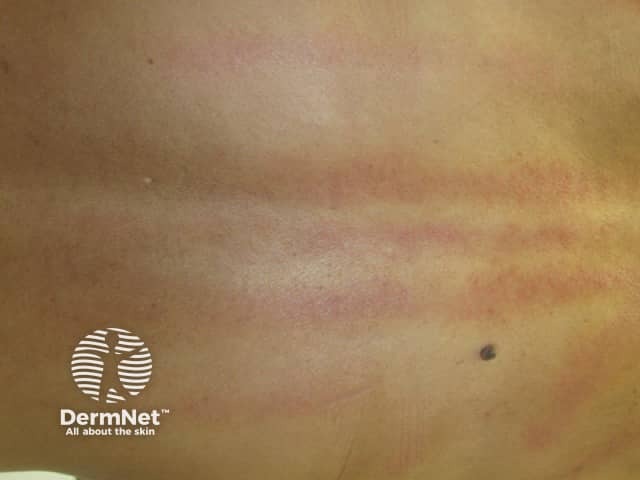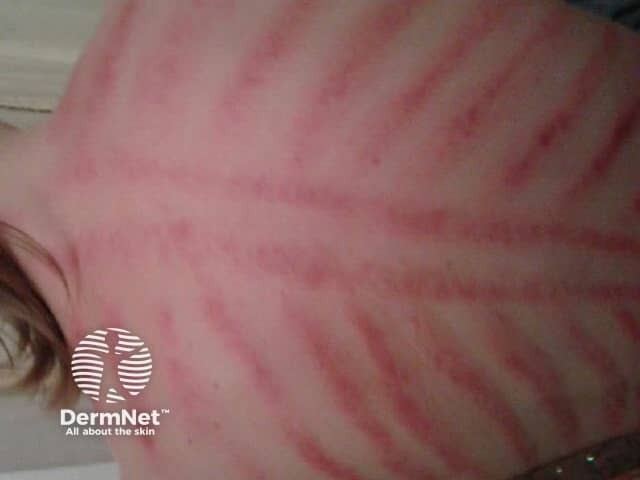Main menu
Common skin conditions

NEWS
Join DermNet PRO
Read more
Quick links
Author: Steven Xie. Final year medical student. University of Auckland. Chief Editor: Dr Amanda Oakley, Dermatologist, Hamilton, New Zealand, June 2015.
Coining or coin rubbing is a technique used in traditional Chinese medicine, and is also known as gua sha (scraping sha-bruises or pressure stroking). It is called cao gio (scraping for wind) in Vietnam. in After applying oil to the skin, the body is stroked in a linear pattern, using a hard instrument with a smooth edge. Although a coin is often used, a porcelain spoon, jade or buffalo horn can give the same result.
The strokes generally form a ‘pine tree’ pattern on the body. The desired effect of coining is to create petechiae (pin-point bruises).


In traditional Chinese medicine, coining has been used in the treatment of numerous health conditions, including headache, fever, chills, acute or chronic pain, respiratory conditions, functional internal organ problems, and musculoskeletal diseases.
As is true for many other traditional Chinese medicine techniques, there is lack of evidence for the efficacy of coining in any disease or condition.
The effects of coining on the skin include the formation of temporary red lines and bruises.
There is one case report of oiled skin that caught on fire, and note of a possible risk of contamination by a blood-borne pathogen.